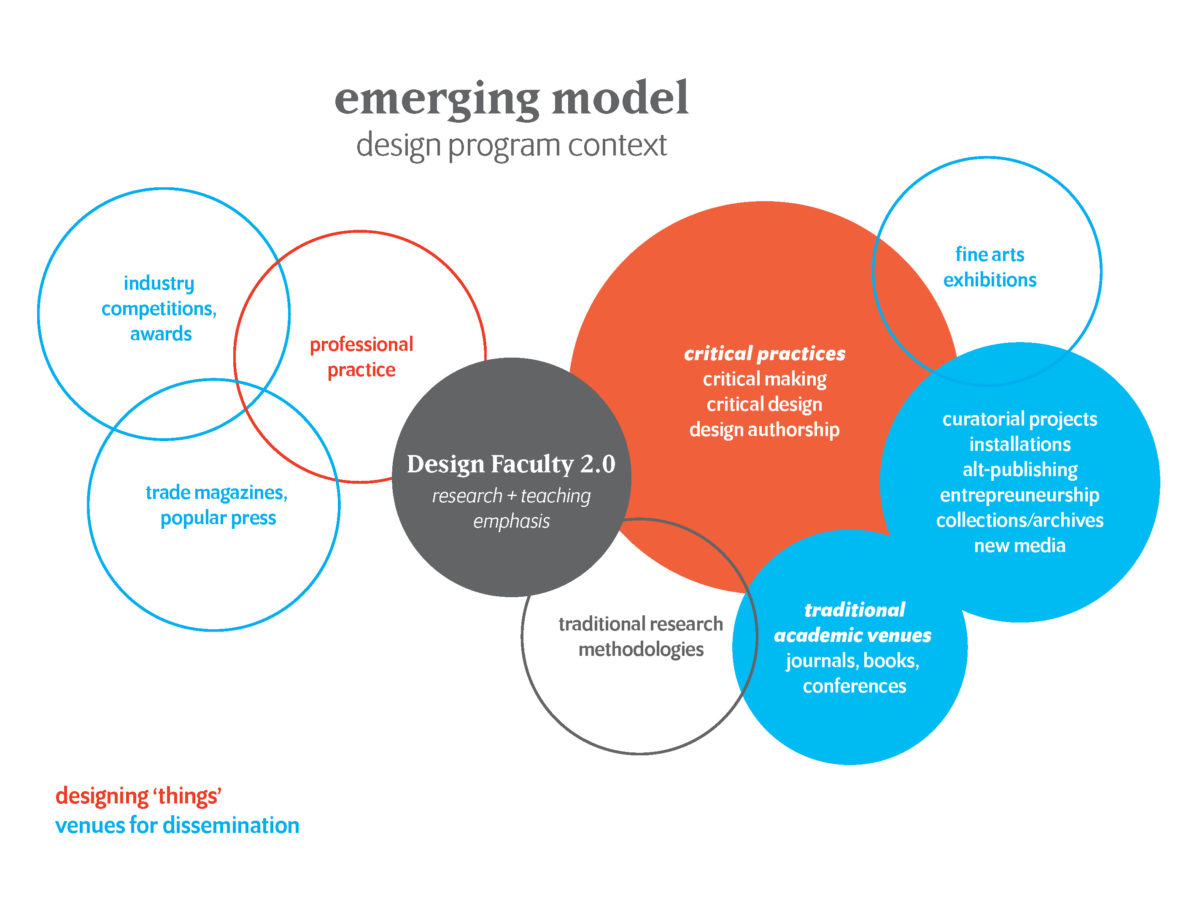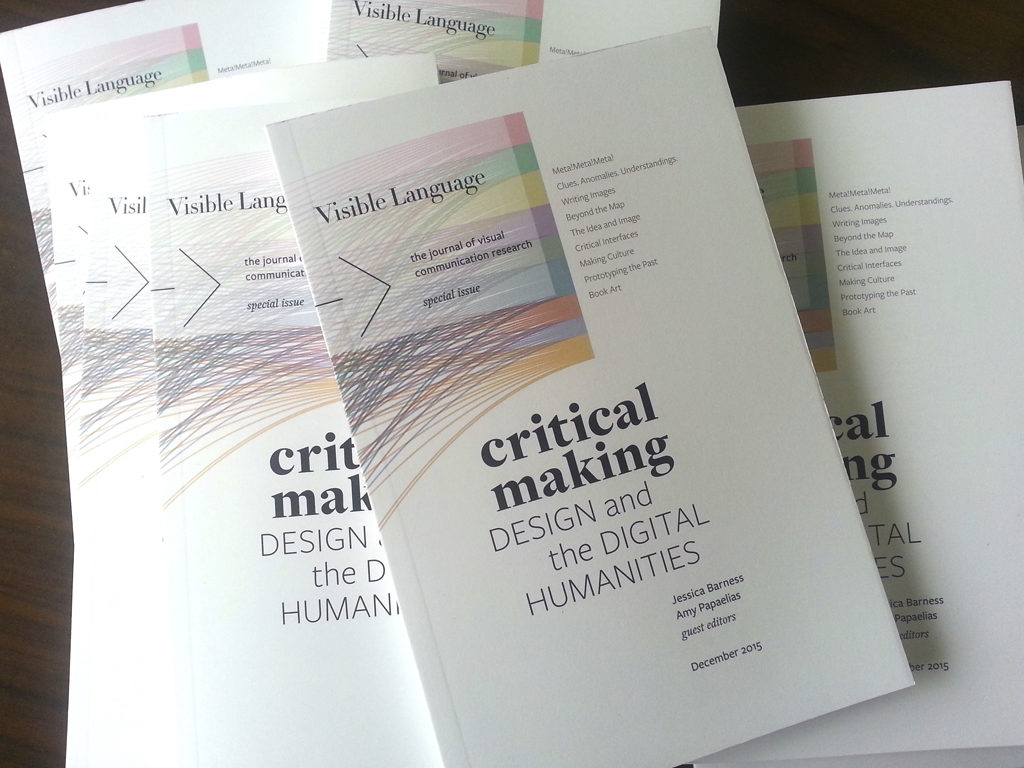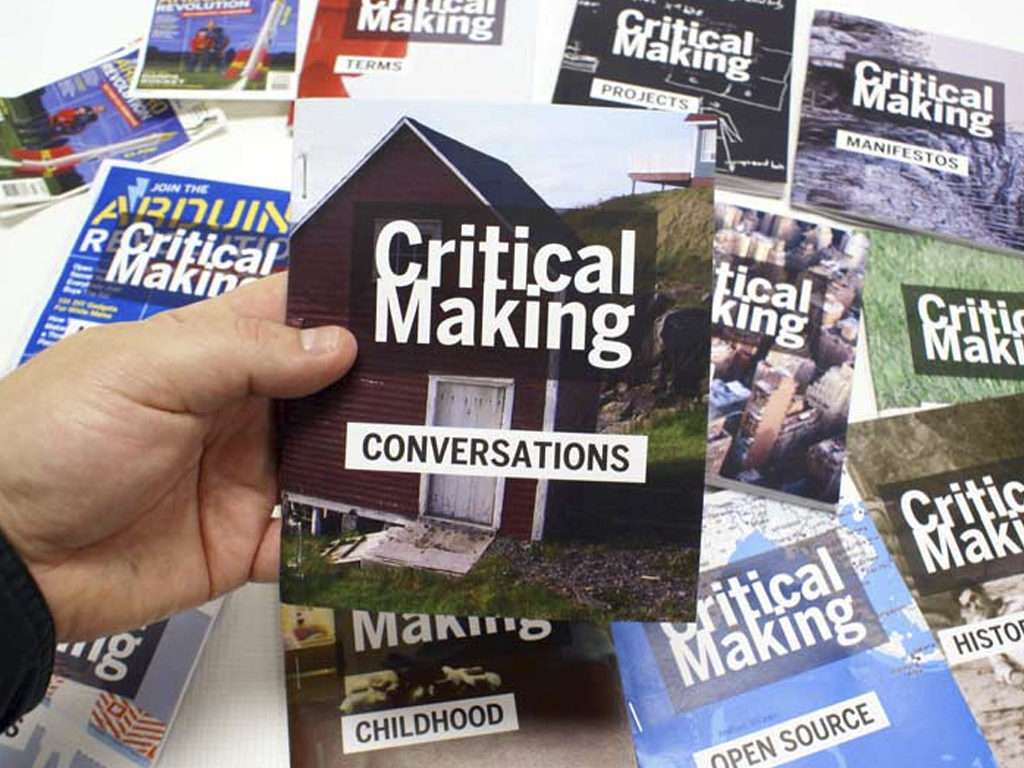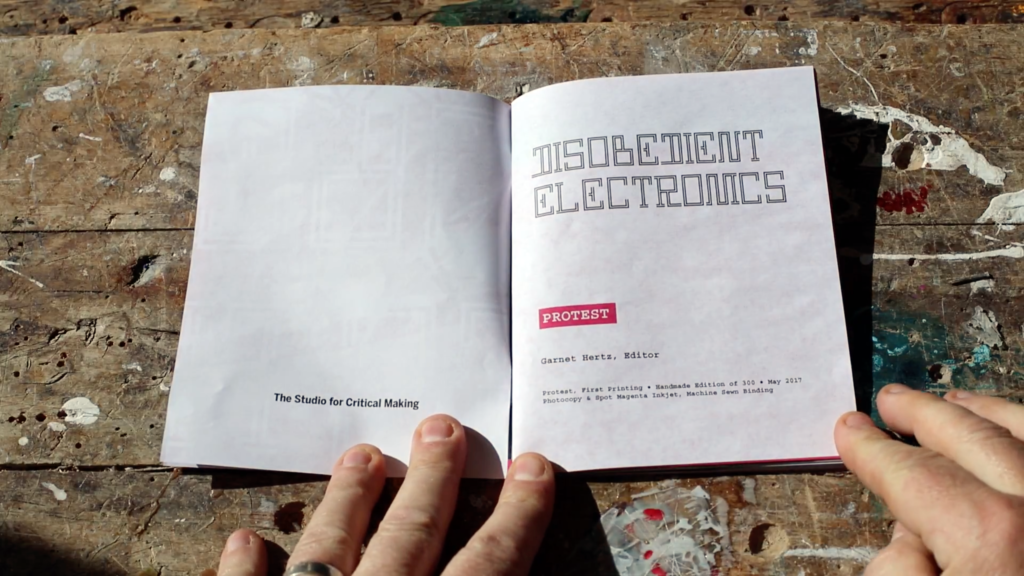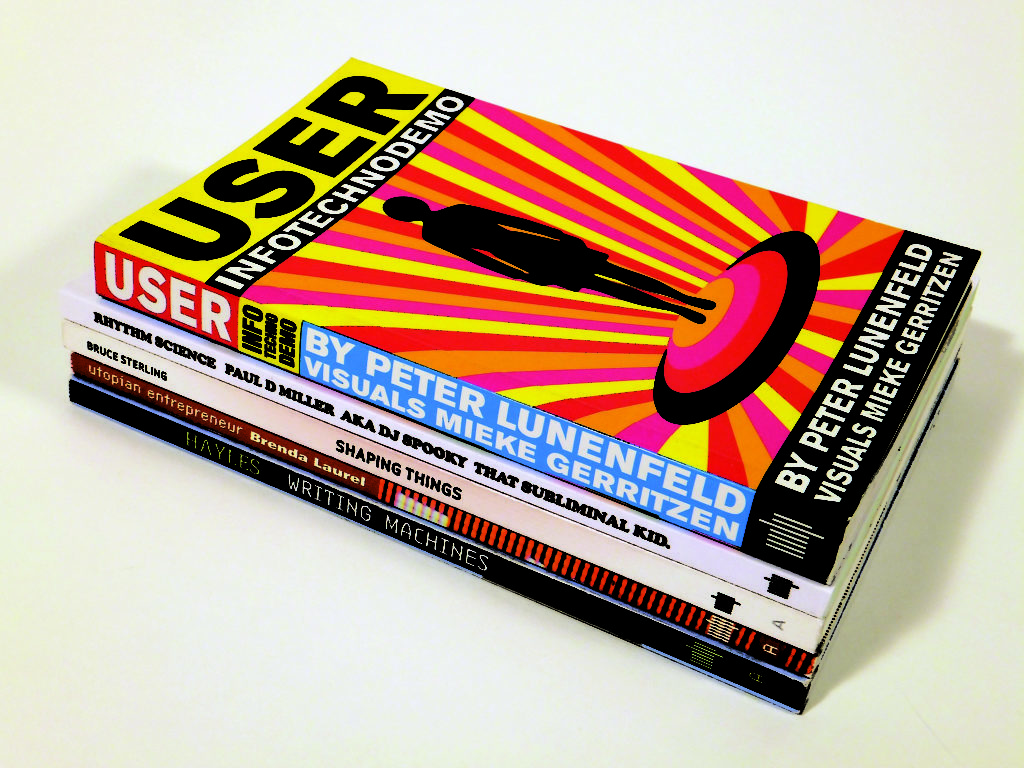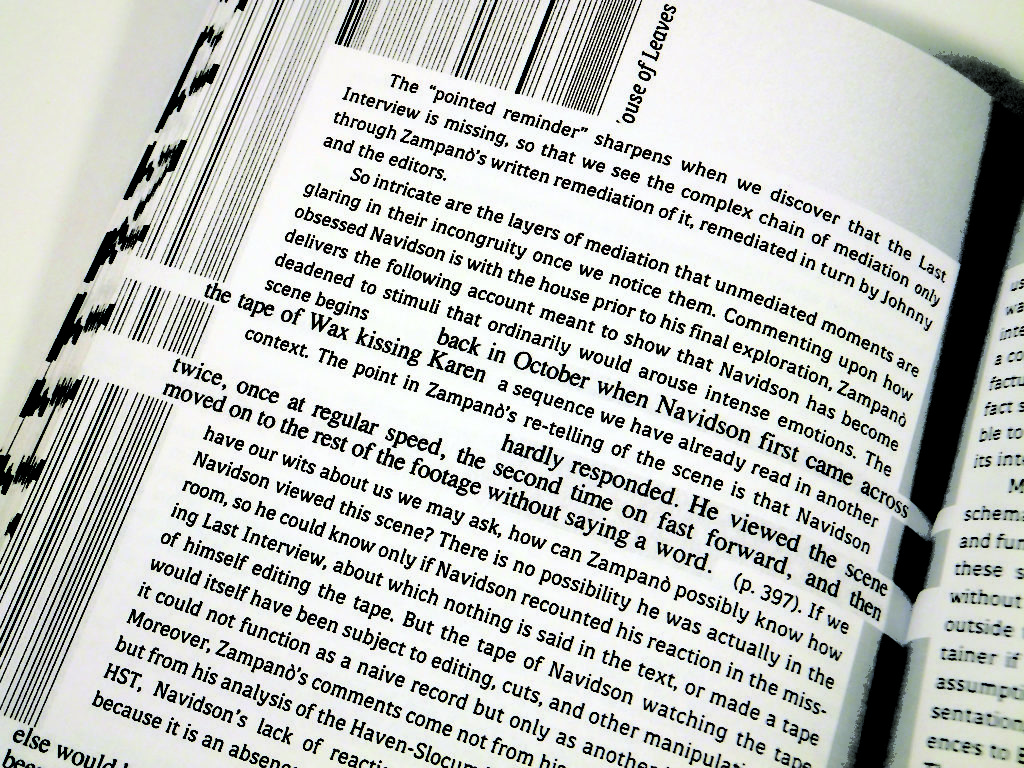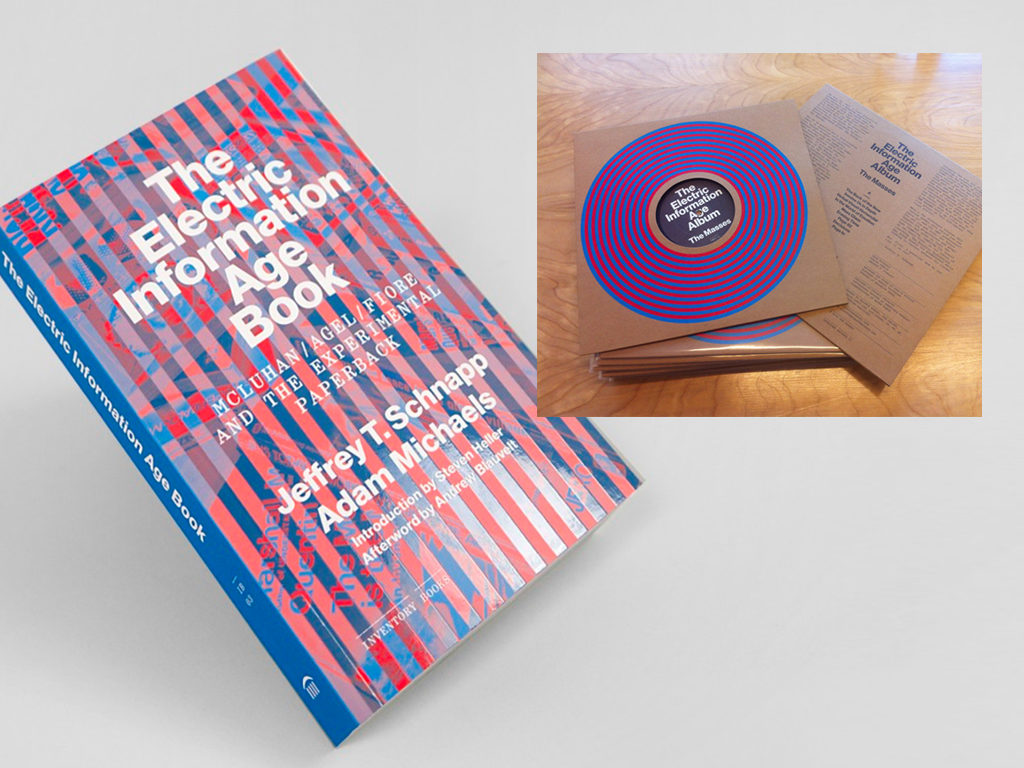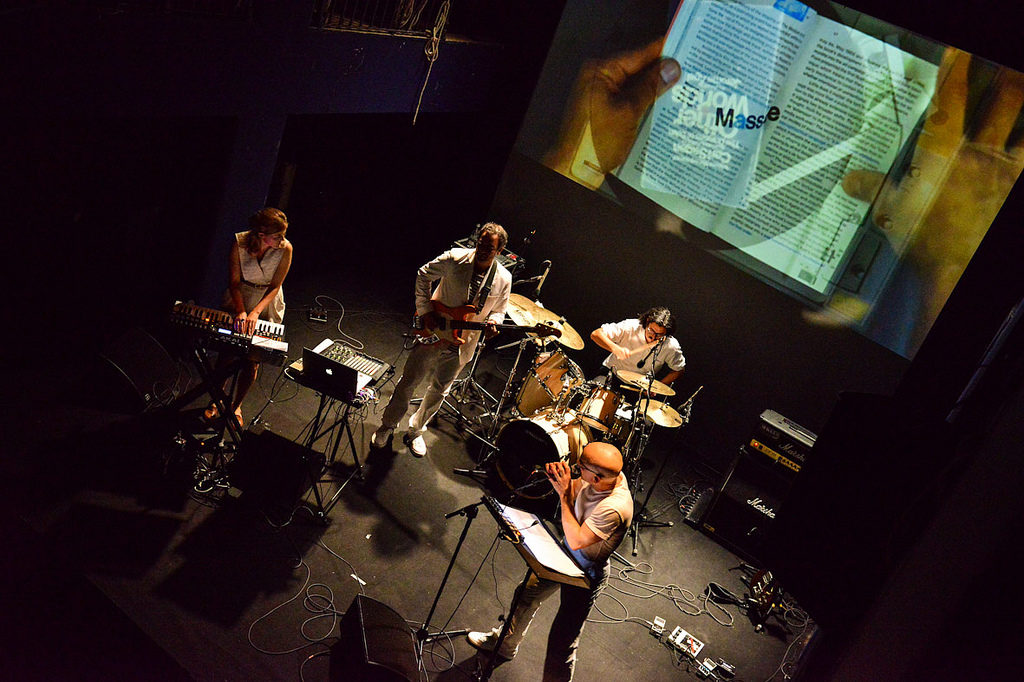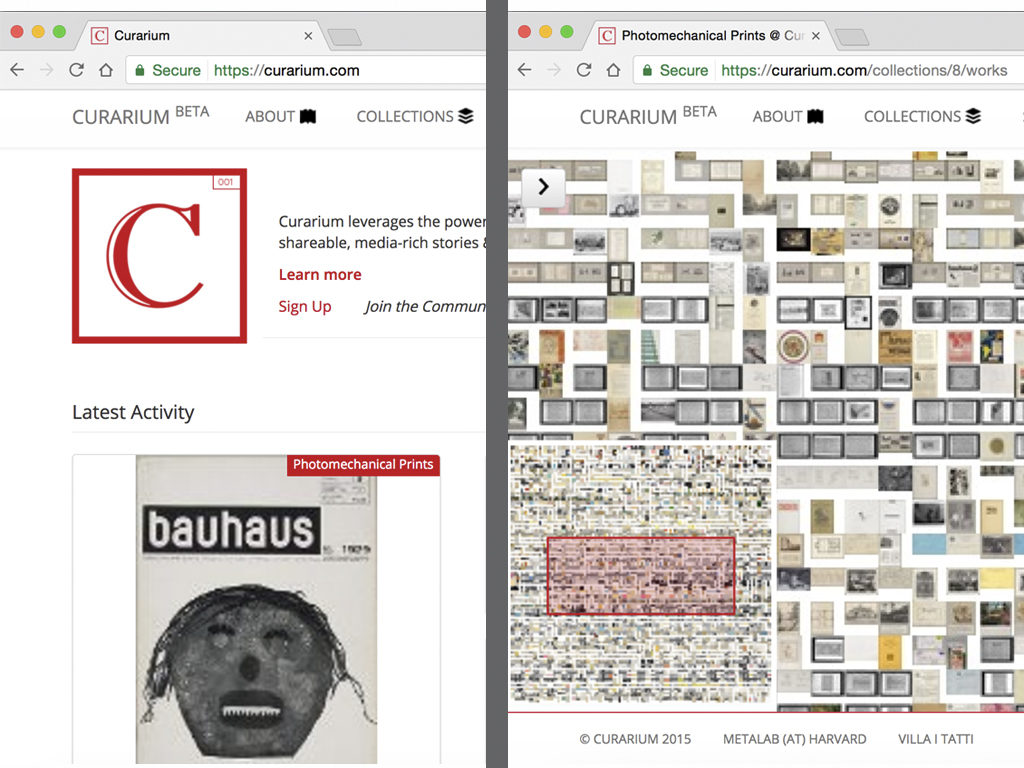View a pdf version of this paper. (2017/10/27)
Jessica Barness
Associate Professor
Kent State University
Steven McCarthy
Professor
University of Minnesota
Conventional academic scholarship typically involves publishing one’s research findings in journals and books. In the arts, it may pertain to performing or exhibiting creative work. Design straddles these worlds and adds its own cultural norms, such as industry competitions that seek the commercial work of professional practitioners. Design scholarship, whether written or visual, does not always fit these models.
And so, we ask:
How might design faculty approach the production and dissemination of creative work that is neither client-based nor fine art?
Over the past decade, other paths to knowledge formation and scholarly productivity have emerged, and we refer to these as critical practices. Involving a speculative approach to design (experimental, expressive, future-oriented), critical practices combine an authorial point-of-view with research and the tangible aspects of media, technology, materials, and process.
Critical Practices of Design Scholarship
Critical Design
Products (often) that embody a polemical approach to a prevailing social, cultural, technical, or economic condition.
Critical Making
An approach undertaken in order to explain or understand a theory, phenomenon, or technology. Knowledge is formed through process and product.
Design Authorship
Increased agency through confluence of designing, writing, and production. Includes project intitation and entrepreneurship.
Critical Practices are experiential and use design as scholarship: the collective learning, attainments, and knowledge of scholars within one discipline or across many. Merging intellectual inquiry with designed ‘things’ is the key component to forming a scholarly agenda through critical practice. Scholarship is shaped by the institutional frameworks available for legitimizing and sharing that knowledge, such as the peer review process, learned societies, universities and libraries, and books and journals.
Engaging in critical practices requires an enhanced, rigorous approach to scholarship – a strategic integration of making and writing – that moves beyond industry practice and fine arts traditions, and is distinctly relevant to the design discipline. Some design faculty working in these areas have found diverse scholarly venues to share their creative and intellectual work. These dissemination venues often take their cues from other disciplinary cultures like the arts, humanities, science, engineering and business, and may include conference presentations, juried exhibitions, competitions, publication (written or visual essays), media products, live performances, hybrid venues, collections, and commissions. These venues can be an advantage to design scholars as they are already generally recognized and legitimized by academic culture.
The following pages contain past and emerging scholarship models; considerations for strategizing and evaluating scholarship; case studies of scholarly critical practice; and concludes with implications for purposes of tenure and promotion.

Traditional Scholarship Model: Art Department Context
The traditional scholarship model for design faculty, at least in second half of the twentieth century, was situated within fine arts departments. In this context, the emphasis was on teaching pre-professional courses and designing “things,” either through professional practice (typically client-oriented commercial work) or through creating personally expressive art work. The former found dissemination through industry competitions and trade publications, while the latter was exhibited in galleries and museums.
Emerging Scholarship Model: Design Program Context
In this emerging model, with design often in its own academic department, research informs teaching and is conducted to create new knowledge for the discipline. Critical practices such as critical making, critical design and design authorship are used to inquire about, and respond to, complex social challenges that often lie outside of professional practice concerns.
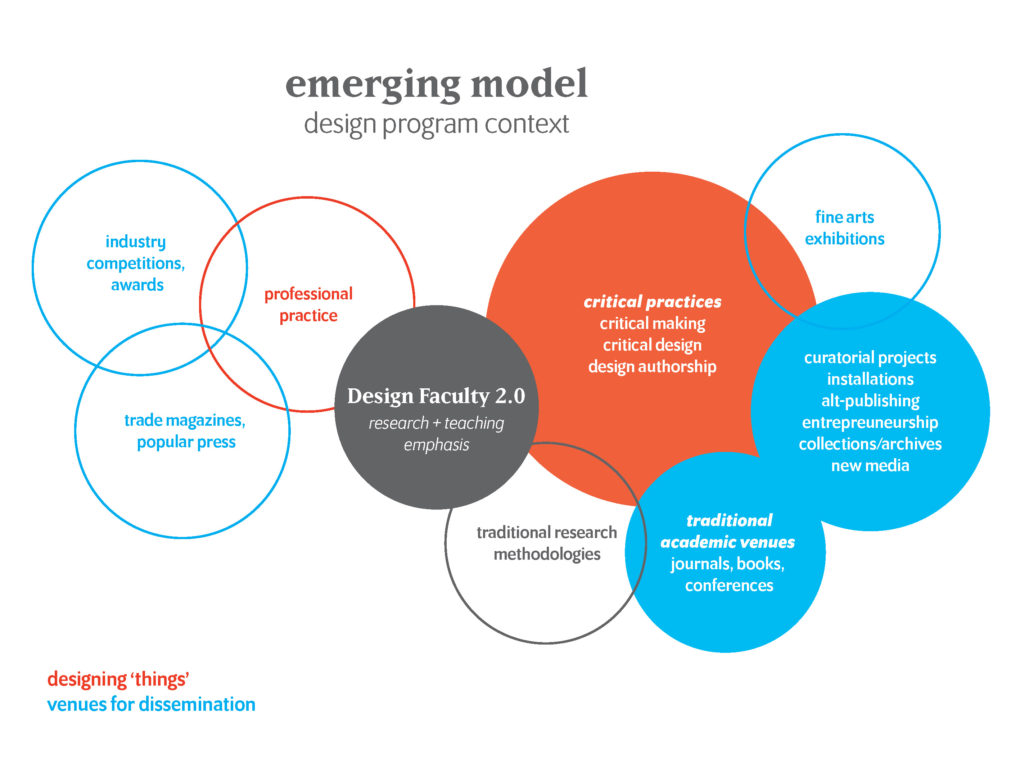
Strategizing and Evaluating Design Scholarship
Considerations for evaluating design scholarship in higher education include faculty effort, the scholarly product, the selection process, dissemination venues, scope (local, regional, national, international), and the resulting impact. The design scholarship matrix below provides specifics on considerations such as these. Evaluating design scholarship necessitates an understanding of how these works “fit” into traditional academic contexts.
Design faculty must strategize their work to connect with expectations for tenure and promotion; however, this may pose challenges if tenure and promotion guidelines do not explicitly allow for diverse forms of scholarship. Thus, the faculty member may need to strategize competitive dissemination as well as determine the impact of a project for purposes of tenure and promotion.
The case studies on the following pages are all self-initiated, critical practice projects. For each, authorship, links, and brief descriptions are provided. Additionally, we have included suggestions on the ways this design scholarship matrix may be applied as projects are approached (by faculty) and evaluated (by colleagues, reviewers, and administrators).
Design Scholarship Matrix
(can be applied sequentially from left to right columns, and non-sequentially with different entry points)
| Effort1, 2 | Product3 | Selection process5 | Dissemination7, 8, 9 | Impact10, 11 |
| Designing, writing, editing, developing, curating, researching, creating, interviewing, applying, prototyping, analyzing, evaluating, consulting, directing, etc. | Design4, article, paper, book, chapter, report, invention, presentation, artwork, media work, product, exhibit, grant application, workshop, etc. | Peer-reviewed, juried, blind reviewed6, editor reviewed, invited, nominated, crowd-sourced, competitive, self-initiated, commissioned, critical evaluation, etc. | Publication, exhibition, conference, collection, presentation, popular, press, symposium, performance, broadcast, marketplace, patent, workshop, etc. | Citations, collections, awards, number of viewers/users/visitors, funded, licensing, media attention, legislation, regulation, human welfare, policy, environmental impact, quality of life, commercial success, other evidence |
| 1. Consideration of role if collaborative scholarship
2. Consideration of relationship to core discipline if interdisciplinary or extra-disciplinary |
3. The product is tangible and/or retrievable
4. Designed work can be: object, image, experience, interaction, performance, service, environment, etc. |
5. Consideration of acceptance rate if known
6. “Blind reviewed” refers to anonymity between reviewer and submitter, and can apply to selection criteria beyond journal articles, such as juried exhibits and competitions |
7. Consideration of reputation or ranking of venue or publication if known
8. If exposed to different audiences, works can be disseminated in multiple venues (i.e. traveling exhibits, different jurors) 9. includes in print and online, and analog and digital formats |
10. Consideration of scope (local, regional, national, international) if known
11. Consideration of impact factor |
Figure 3. Design Scholarship Matrix, courtesy of Steven McCarthy.
Critical Making: Design and the Digital Humanities, Visible Language (2015)
Jessica Barness, Amy Papaelias (editors)
Anne Burdick, Donato Ricci, Robin de Mourat, Christophe Leclercq, Bruno Latour, Holly Willis, Tania Allen, Sara Queen, Stephen Boyd Davis, Florian Kräutli, Steve Anderson, Padmini Ray Murray, Chris Hand, Jentery Sayers, Steven McCarthy (authors)
The special issue of Visible Language journal, “Critical Making: Design and the Digital Humanities” (vol. 49, no. 3; double-blind peer reviewed) locates where, how, and why critical making is emerging and the scholarly forms it takes. Nine articles by an international group of authors were organized into two areas that blurred disciplinary boundaries: Theories and Speculations (methods and systems to facilitate research), and Forms and Objects (publishing, prototyping, and hacking practices). The editors approached the issue itself as research in critical making by performing a text analysis and created data visualizations to better understand the language used to communicate the concept of critical making and show structural connections among the articles.
http://visiblelanguagejournal.com/issue/172
EFFORT
• editing
• designing
PRODUCT
• journal issue
• data visualizations
SELECTION PROCESS
• self-initiated
• editor reviewed
• critical evaluations
DISSEMINATION
• publication
Critical Making Zine (2012), Disobedient Electronics (2017)
Garnet Hertz with various contributors
Critical Making Zine and Disobedient Electronics are self-published, handmade book projects that critically examine the ways making can extend conversations on technology, society, and culture. The ten volumes of Critical Making contain works by over 70 contributors from various disciplines, and produced using a photocopy machine and staples. Similarly, the contributors to Disobedient Electronics are also scholars, writing on projects and perspectives surrounding the theme of ‘Protest’. Both works have been exhibited internationally and acquired by permanent collections.
They were also given away for free to project contributors, individuals, and organizations.
http://conceptlab.com/criticalmaking/
http://www.disobedientelectronics.com/
EFFORT
• designing
• curating
• creating
• writing
PRODUCT
• book (handmade editions)
SELECTION PROCESS
• self-initiated
• juried
• peer reviewed
• invited
DISSEMINATION
• exhibitions
• collections
• published articles
• presentations
IMPACT
• citations
• media attention
The Best American Book of the 20th Century (2014)

Societé Réaliste
Project Projects (design)
Onomatopee (production)
An investigation into language and collage, The Best American Book of the 20th Century presents the intertextuality of multiple narratives, author-reader dynamics, and shape of language over time. The project was also conceived as an exhibition, as a “‘stockroom-booksale’, resonating the symptoms of mass-distribution as visualized both on a sculptural and a graphic, formalized level” (Onomatopee web site). The book is composed entirely of the first lines from best selling books spanning 1900–1999.
http://www.onomatopee.net/project.php?progID=019f131ccccd023b1808bdb9d7bef9ff
EFFORT
• designing
• writing
PRODUCT
• book (mass produced)
SELECTION PROCESS
• self-initiated
• commissioned
DISSEMINATION
• exhibitions
• marketplace
IMPACT
• media attention
• commercial success
• citations
MediaWorks Pamphlet Series (2002–05)
MIT Press, various authors and designers
The MIT Press MediaWorks Pamphlet Series merges form and function through collaborative pairings of writers and designers. The presence of co-authorship is amplified through the weaving together of design decisions and primary written narrative, resulting in objects that are “zines for grown-ups, commingling word and image, enabling text to thrive in an increasing visual culture” (MIT Press website).
https://mitpress.mit.edu/sites/default/files/titles/content/mediawork/index.html
EFFORT
• designing
• writing
PRODUCT
• book (mass produced)
SELECTION PROCESS
• editor reviewed
• commissioned
DISSEMINATION
• marketplace
IMPACT
• media attention
• commercial success
• citations
The Electric Information Age Book and album (2011–12)
Jeffrey T. Schnapp, Adam Michaels (book)
The Masses (album)
Project Projects (design)
The Electric Information Age Book, and its audio extension, continue the investigation of mass-market publishing and graphic experimentation begun in the late 1960s by Jerome Agel, Quentin Fiore, and Marshall McLuhan with The Medium is the Massage. The LP mixes musical genres with text samples from the book. This project exemplifies collaborative work that explores the edges of media and performance, while also encompassing scholarly thought and creative practice.
https://wearethemasses.bandcamp.com/
EFFORT
• designing
• researching
• creating
PRODUCT
• book (mass produced)
• vinyl record
SELECTION PROCESS
• self-initiated
• editor reviewed
DISSEMINATION
• marketplace
• digital distribution (audio tracks)
IMPACT
• media attention
• commercial success
• citations
Best Made / Re Made
Peter Buchanan-Smith (left)
Rebekah Modrak (right)
Re Made Plunger, a project by Rebekah Modrak, is a parody of Best Made Axe, a retail product by Peter Buchanan-Smith. Re Made is “a very pointed, and useful, example of object-as-critique, setting off a very serious line of questioning about the ideologies and biases embedded in designed things.
If a picture is a worth a thousand words, maybe sometimes the right critical object is worth a thousand critical essays”
(http://designobserver.com/feature/object-vs-object/38464).
https://www.bestmadeco.com/shop/blades-axes/axes
http://remadeco.org/
EFFORT
• designing
• researching
• creating
PRODUCT
• website
• product
SELECTION PROCESS
• self-initiated
• peer reviewed
• invited
DISSEMINATION
• published articles
• presentations
IMPACT
• media attention
• citations
• number of views
All Possible Futures (2014)
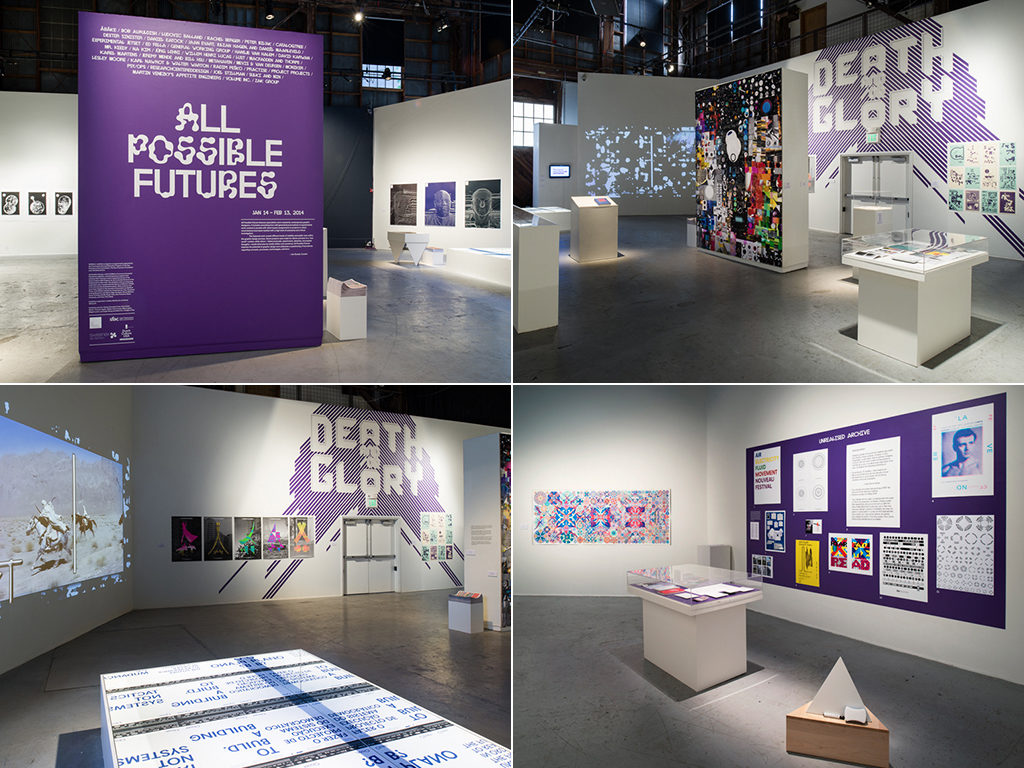
Jon Sueda (curation)
Curation as critical practice is also a scholarly means to investigate a topic and engage the public. All Possible Futures explores speculative work by contemporary graphic designers. This broad spectrum of work includes self-initiated projects, experimental client work, and other endeavors that respond to a question of “what if?” – and highlights the potential for expanding the conventional boundaries of design practice. Moving design away from its expected context, the exhibition provides opportunity for visitors to interact with designed “things” in a new way.
http://allpossiblefutures.net/
EFFORT
• curating
• researching
PRODUCT
• exhibition
SELECTION PROCESS
• self-initiated
• invited (exhibition venue)
DISSEMINATION
• exhibition
IMPACT
• media attention
• number of visitors
• citations
Curarium (2015)
metaLAB, Harvard University
Curarium is an example of research at the intersection of experimental humanities, data visualization, and design. According to the project webpage, the interface is a “collection of collections, an ‘animated archive,’ designed to serve as a model for crowdsourcing annotation, curation, and augmentation of works within and beyond their respective collections.” Curarium integrates visual and interactive argumentation with storytelling and annotation, and presents a possible means to explore museum collections in a compelling, engaging way.
EFFORT
• designing
• researching
• developing
PRODUCT
• website
SELECTION PROCESS
• self-initiated
• peer reviewed
• invited
DISSEMINATION
• published articles
• presentation
IMPACT
• number of viewers or users
• citations
Casualties of War (2005)

Daniel Jasper
Casualties of War is a series of design projects that sought to visually enumerate and differentiate the growing list of United States military fatalities in the current Iraq War. These are projects that enumerate the total number of fatalities (quantity) yet strive to differentiate among the individual soldiers (quality). For the first time in the history of the United States women are fighting in a war zone as enlisted soldiers and as a result many are dying. The quilt results from a process by which portraits of American women soldiers killed in the Iraq War are repurposed from digital images grabbed from the Faces of the Fallen interactive feature on WashingtonPost.com into large-scale patchwork quilts. The fabric is also repurposed from second hand clothing and upholstered furniture.
EFFORT
• designing
• creating
PRODUCT
• quilt
SELECTION PROCESS
• self-initiated
• peer reviewed
• juried
• invited
DISSEMINATION
• exhibitions
• published articles
• presentation
• collections
IMPACT
• citations
• awards
• collections
• media attention
Emigre Magazine Index (2012), Vision in the Making (2017)
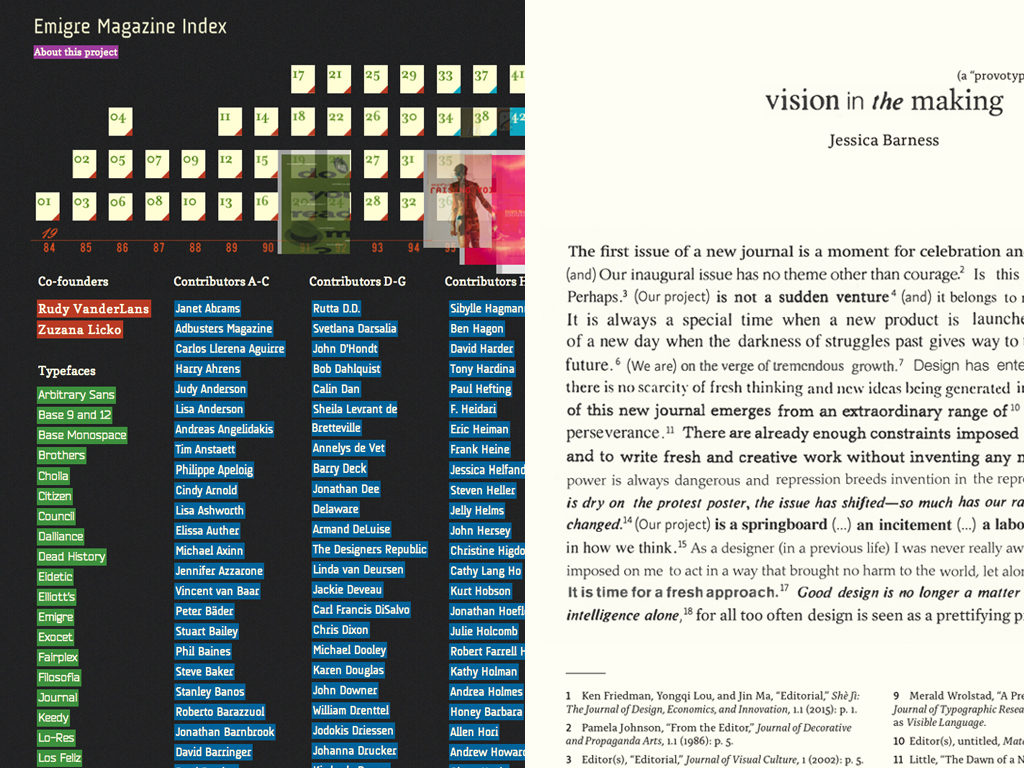
Jessica Barness
In these two projects, the contents of an archive or collection are translated to new contexts. The Emigre Magazine Index (left) is a digital interface developed as part of a public engagement program at the Goldstein Museum of Design. This online finding tool situates the contents and contributors of all sixty-nine issues in an interactive context, and served as a means to investigate authorship hierarchies and resulting navigational challenges. The close reading of texts outside traditional design literature prompted the development of Vision in the Making (right), a visual essay-manifesto composed of text snippets found within the editor’s introductions to inaugural issues of design periodicals. This textual assemblage preserves original typefaces and presents a glimpse of design publication history through critical, creative analysis.
http://jessicabarness.com/projects/emigre.html
http://jessicabarness.com/projects/vision-in-the-making.html
EFFORT
• designing
• researching
• developing
• prototyping
PRODUCT
• website
• article
SELECTION PROCESS
• self-initiated
• peer reviewed
• invited
DISSEMINATION
• published articles
• presentations
IMPACT
• citations
• number of viewers
• media attention
WYSi-WE (What You See is What Emerged) (2013)

Jessica Barness
WYSi-WE (What You See is What Emerged) is a series of graphic assemblages created to investigate social intersections and photographic documentation of human nature. Photographs, sourced by keywords related to class, faith, gender, politics and sexuality, are fused together at the level of code bits (a technique known as databending or glitching) to graphically expose the influence of one piece of social identity on another. Understanding the visual work requires viewing the assemblages in published or exhibited form; each work is accompanied by documentation of its text-image parts, and the viewer is invited to read through the compositions in multiple ways.
http://jessicabarness.com/projects/wysiwe.html
EFFORT
• designing
• writing
PRODUCT
• collages
• article
SELECTION PROCESS
• self-initiated
• juried
• peer reviewed
• invited
DISSEMINATION
• published articles
• presentation
• exhibitions
IMPACT
• citations
• number of exhibition visitors
Book Art The Information Electric Age (2015)

Steven McCarthy
Operating under the theoretical frameworks of ‘remediation’, ‘recontextualization,’ and ‘critical design,’ this project proposes an alternative method to standard book reviews and to notions of publishing. It is a critical book review with a supporting essay that includes an in-depth description of the author’s hybrid digital-analog process. Book Art is a critical remix of The Electric Information Age Book McLuhan/Agel/Fiore (Jeffery Schnapp and Adam Michaels), with cameo appearances by The Medium is the Massage. Book Art uses collage to reconfigure and re-imagine these books as a commentary on mediation, information, expression, communication, and authorship.
http://faculty.design.umn.edu/mccarthy/BookArt.html
EFFORT
• designing
• writing
• creating
PRODUCT
• book (on-demand distribution)
SELECTION PROCESS
• self-initiated
• juried
• peer reviewed
• invited
DISSEMINATION
• published articles
• presentation
• exhibitions
• marketplace
IMPACT
• citations
• awards
• commercial success
Wee Go Library (2016)

Steven McCarthy
Wee Go Library is a small, mobile display unit for twenty-two altered books. The books were harvested from Little Free Libraries in the Twin Cities (“take a book, leave a book”) as a commentary on neighborhood, community, design, architecture, and of course, books. Custom-built oak and pine cabinets are mounted to a metal hand-truck; drawers are felt-lined; the Wee Go Library sign is laser-cut in oak. Each book is sourced to its donor library with a small pamphlet that has a pin-pointed map and photos of the library structure and sponsoring house. Various re-mixing techniques were used to enliven the books: collage, rebinding, cutting, folding, tearing and gluing.
http://faculty.design.umn.edu/mccarthy/WeeGoLibrary.html
EFFORT
• designing
• writing
• researching
• creating
PRODUCT
• cabinet
• books (altered)
• pamphlets
SELECTION PROCESS
• self-initiated
• juried
• peer reviewed
• invited
DISSEMINATION
• published articles
• presentation
• exhibitions
IMPACT
• citations
• awards
• media attention
Implications for Tenure and Promotion of Design Faculty
In conclusion, we recommend the following be considered by faculty engaging in critical practice as design scholarship. These questions should be addressed in the early stages of projects and research agendas — in connection with an institution’s guidelines for tenure and promotion – to clarify expectations and possibilities.
Academic Culture
- Is your environment accepting of diverse forms of scholarship?
- Are senior colleagues supportive?
Tools and Procedures
- Do your tenure and promotion guidelines “literally” accommodate diverse forms of scholarship?
- Can ‘novelty’ of critical practices be leveraged into impact, rigor, etc.?
Interdisciplinary and Collaborative Work
- Can documentation, support, and legitimacy be garnered from other fields (humanities, the arts, sciences, etc.)?
- Is collaborative work supported, and in what ways?
External Reviewers
- Are the external reviewers appropriate for evaluating the candidate’s dossier for tenure and/or promotion?
Jessica Barness (MFA University of Minnesota) is an associate professor in the School of Visual Communication Design at Kent State University. Her research resides at the intersection of design, humanistic inquiry, and interactive technologies, investigated through a critical, practice-based approach. She has presented, exhibited, and published her work internationally, and co-edited the special issue of Visible Language journal, Critical Making: Design and the Digital Humanities.
Steven McCarthy (MFA Stanford University) is a professor of graphic design at the University of Minnesota, Twin Cities campus. His long-standing interest in design authorship, as scholar and practitioner, has led to publications, presentations, exhibits and grant-supported research in a dozen countries. His book on the topic, The Designer As… Author, Producer, Activist, Entrepreneur, Curator and Collaborator: New Models for Communicating was published in 2013 by BIS Publishers, Amsterdam. McCarthy is currently serving a three year term on the board of the Minnesota Center for Book Arts.
